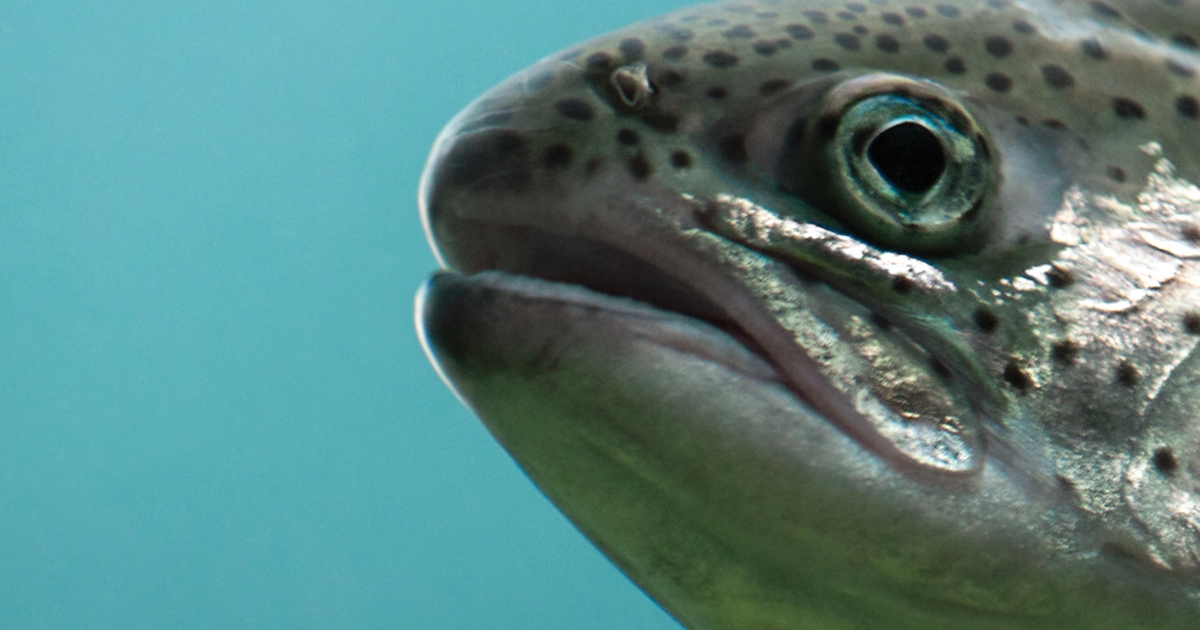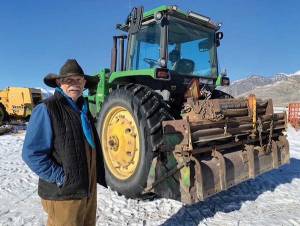“Closing December 8: no fish means no business.”
The sign on the motel in the little town in central Idaho was blunt and to the point. Riggins relies on the wild and scenic Salmon River to give meaning and economics to the community. But an emergency closure of the winter steelhead season had left guides in the lurch, motels and restaurants empty, and no lines at the one gas station and grocery store.
In summer, tourists flock from all over the world to experience epic whitewater rafting, and numerous guide services bring in money to all the other businesses in town. But spring means salmon, and winter means steelhead: without fish, half the economic base of the community vanishes.
The reason for the closure was a bureaucratic snafu.
Idaho Department of Fish and Game filed a plan for management of the “incidental take” of wild steelhead under the Endangered Species Act with NOAA Fisheries in Portland, Ore., in 2010. Completion and acceptance of the plan acknowledges that a small number of wild fish will be harmed by being caught and released while anglers are fishing for hatchery steelhead.
Unfortunately, IDFG never received the incidental take permit, due, apparently, to a backlog of documents for review by NOAA.
After eight years of operating a season without a valid permit, several environmental groups got wind of the issue and threatened to sue IDFG if they continued to allow a steelhead season without a valid permit.
The Idaho Fish and Game Commission voted to close steelhead fishing in early December upon learning that the state agency would almost surely lose a lawsuit and would be responsible for paying the litigants’ attorneys’ fees.
However, with a hastily formed local group advocating for the reopening of the season, and some breathing room provided by the organizations potentially litigating, the Commission reconsidered, and folks were able to fish on a very limited basis again on December 13.
But that’s just part of the story.
While it is unfortunate Idaho missed some of the steelhead season, too much emphasis has been placed on the paperwork snafu. What anglers, local businesses, and concerned citizens are forgetting is that this season steelhead count was the lowest since 1978. And Idaho isn’t alone.
Oregon and Washington also slashed daily bag limits of hatchery fish. Even with a season, we’re all fighting over scraps.
Idaho has some of the best habitat on Earth to support robust salmon and steelhead populations. But the fish have to get here, to make use of pristine streams and high-quality cobble for redds. Getting wild fish to return to historical spawning tributaries of the mighty Snake, Columbia, and Salmon rivers isn’t easy.
Even hatchery fish find the gauntlet of dams for out-migrants and returning fish daunting.
In addition, climate change has clearly impacted ocean conditions. IDFG data clearly shows plummeting salmon and steelhead numbers after all the dams were in place. The dams and climate change are just two more nails in the coffin.
What we now call a “good season” is laughable when compared to historical, pre-dam and pre-climate change years. We accept as “normal” something that is historically far from it. This phenomenon is called “shifting baseline syndrome.”
People simply forget what “normal” used to look like: their perception changes based on a reduction of abundance, and each year that happens. “Normal” becomes ever more diminished.
Look at photos of salmon and steelhead taken in Idaho in the early 1900’s. Fish were huge compared to today’s leftovers, and they were incredibly abundant. That’s what “normal” looked liked until the impact of billions of humans started a trophic downward trend.
But the web of life isn’t just about fish and dams. If fish don’t have enough to eat, they starve and die. Salmon and steelhead eat insects, and guess what? Insect populations all over the world are crashing.
Most people have heard about the drastic decline of honeybees, but they aren’t the only insects struggling to survive. Habitat degradation leads the causes for insect decline: more people means more natural habitat paved over or replaced by monocultures of lawns using herbicides and pesticides to stay perkily green all summer.
In addition, there’s the issue of space. There’s only so much room and as humans demand more of it, other species will decline.
Loss of species diversity is bad news for fish, but also bad news for birds, mammals, reptiles, amphibians and, of course, humans.
Journals of explorers, pioneers, and accounts from ship captains tell a tale of robust diversity on land, sea, and air before human population got so wildly out of control and demanded more and more of the natural world to sustain us.
My husband grew up on a small coastal river in Oregon. He recalls seeing salmon filling the water from bank to bank and landing sea-lice spangled steelhead for breakfast after wetting a line for just a few minutes. Those days are gone: extinct, in fact.
There are two kinds of extinction: numerical and functional. Numerical extinction is easy to understand: the species has too few members to reproduce and eventually dies off.
Functional extinction means certain animals and plants are still present, but their place in the ecosystem is so diminished that the interaction with other species is so degraded, and their normal effect on the system is lost.
This loss of interaction results in disorder within the ecosystem, causing other species to undergo drastic population and territorial—where they can still live—changes. Most of us understand deforestation, but we now need to grapple with defaunation: the drastic reduction of animal species throughout the world.
A study this year by the Proceedings of the National Academy of Sciences state that looking at mammal populations by weight, 96 percent of biomass on Earth is humans and livestock. A measly four percent represents wild mammals around the world.
What happens on land effects life cycle in our ocean and streams, so it’s no surprise salmon and steelhead populations are plummeting.
Shifting baseline syndrome ties in directly with another human thinking phenomenon: we are essentially time illiterate, according to Marcia Bjornerud, Professor of Geosciences at Laurence University in Appleton, Wis.
Bjornerud says by not recognizing our truncated thinking of time, we “are navigating recklessly toward a future using a conception of time as primitive as the pre-Copernicium view of the universe.”
Long-term planning of decades, not two-year terms like we have in government and resulting “stop-gap” funding measures, is a ridiculous way to ensure the long-term health of our planet, including all the plants, animals, and humans who need this kind of “geologic” thinking.
Earth’s history is made up of eons, not single years. Until we learn to look far into the future, to choose a path that considers the long view and finds solutions that recognize how much we still don’t know about the intricate nuances between species on our planet, we’ll be looking at way more dire situations than the reduction of steelhead season.
It’s time we quit fighting over the scraps of a once vibrant and healthy world. We should take the long view and begin to wrestle with the critical ecological and social issues of our time. Otherwise, some year, we may look back and think the 2018-2019 steelhead season was a good one. ISI










